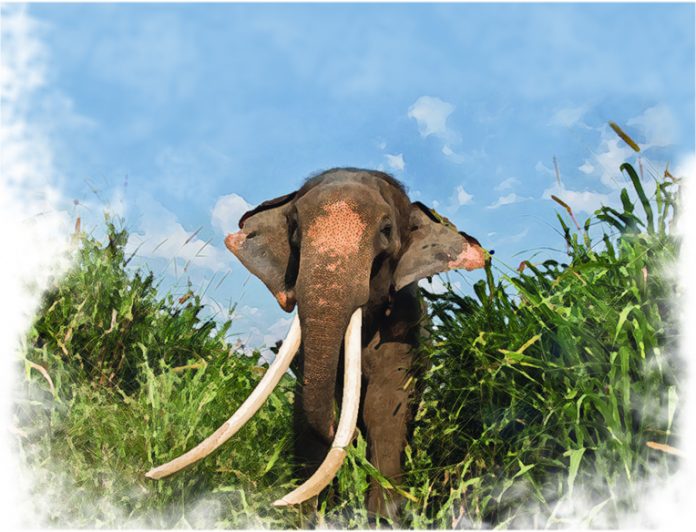Great Tuskers are the closest living cousins of the legendary woolly mammoth. Their tusks grow up to a whopping 3 metres long! Magnificent though they may be, these appendages are the very reason the elephants are quickly going extinct.
Text and Photos George Dian Balan
Woolly mammoths – the Ice Age giants that capture our imagination in movies and books – live on today in the jungles of South Asia.
Whether revered as a god, used for labour, or roaming free in isolated pockets of wilderness, their closest cousin, the Asian elephant, possesses the same majestic characteristics: an awe-inspiring size and a set of massive to-the-ground tusks, each weighing up to 70 kilograms and growing up to three metres long. The tusks are key, for only specimens with these ploughing spears of ivory may assume the title “great tusker”.
Related: Before They are Silenced Forever
Compared to their African and woolly Arctic cousins, Asian tuskers have slightly slimmer, lighter and shorter incisor teeth. Where big tuskers once ruled the Asian elephant’s range from Sri Lanka to China, years of “man-made reverse selection” (as opposed to natural selection) have stripped these bulls of their tusks, creating a large imbalance in the natural ratio of great tuskers to maknas, or tuskless elephants.

Bull elephants reach their prime late in life, from 40 to 50 years old. This is the same time that their tusks see exponential growth. Tusks are useful: They debark trees, dig for water, defend against opponents, and, above all, impress the ladies. Big tusks are a sign of superior genes, long life and health; females prefer males with big tusks to father their offspring.
Related: Thar Be Dragons
But the targeting of tusks for ivory by trophy hunters and poachers, and the practice of systematically catching wild bulls and isolating them in captivity, have locked away these formidable genes. Less than half the Asian elephant population survived the last two decades, and today, only some 40 great tuskers exist – about 30 African and 10 Asian. Of the latter, just one lonely animal remains in the wild. But even captive great tuskers lack proper reproductive opportunities, meaning their DNA is quickly vanishing from the species’ genetic pool.
Related: Nowhere to Escape
Preserving this iconic tusk strain for future generations, and reversing the effect of human influence, requires an effort almost as massive as the tusks themselves. Quality surveillance, constant armed guards, adequate medical treatment, and targeted artificial insemination programmes need to be put in motion for great tuskers – and potentially emerging great tuskers – to conserve their breed and restore natural tusk length. With cave paintings, bones and frozen tissue as all that remains of the prehistoric mammoths, this may be our last chance to preserve Nature’s original design of the glorious pachyderm.
For more stories and photographs from this issue, see Asian Geographic Issue 131, 2018











